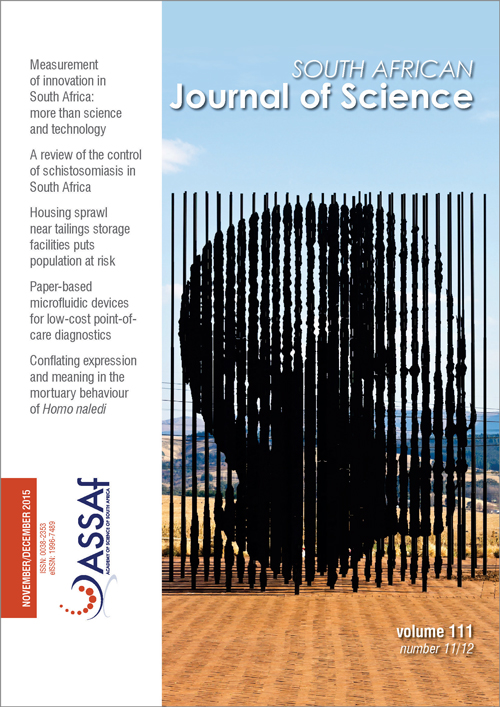Measurement of innovation in South Africa: An analysis of survey metrics and recommendations
DOI:
https://doi.org/10.17159/sajs.2015/20140163Keywords:
NSI measurement, indicators, innovation survey, non-technological innovation, innovation metricsAbstract
The National System of Innovation (NSI) is an important construct in South Africa’s policy discourse as illustrated in key national planning initiatives, such as the National Development Plan. The country’s capacity to innovate is linked to the prospects for industrial development leading to social and economic growth. Proper measurement of innovation activity is therefore crucial for policymaking. In this study, a constructive analytical critique of the innovation surveys that are conducted in South Africa is presented, the case for broadening current perspectives of innovation in the national policy discourse is reinforced, the significance of a broad perspective of innovation is demonstrated and new metrics for use in the measurement of the performance of the NSI are proposed. Current NSI survey instruments lack definition of non-technological innovation. They emphasise inputs rather than outputs, lack regional and sectoral analyses, give limited attention to innovation diffusion and are susceptible to respondent interpretation. Furthermore, there are gaps regarding the wider conditions of innovation and system linkages and learning. In order to obtain a comprehensive assessment of innovation in South Africa, there is a need to sharpen the metrics for measuring non-technological innovation and to define, account for and accurately measure the ‘hidden’ innovations that drive the realisation of value in management, the arts, public service and society in general. The new proposed indicators, which are mostly focused on innovation outputs, can be used as a basis for plugging the gaps identified in the existing surveys.
Published
Issue
Section
License

All articles are published under a Creative Commons Attribution 4.0 International Licence
Copyright is retained by the authors. Readers are welcome to reproduce, share and adapt the content without permission provided the source is attributed.
Disclaimer: The publisher and editors accept no responsibility for statements made by the authors
How to Cite
- Abstract 878
- PDF 4797
- EPUB 194
- XML 233












.png)